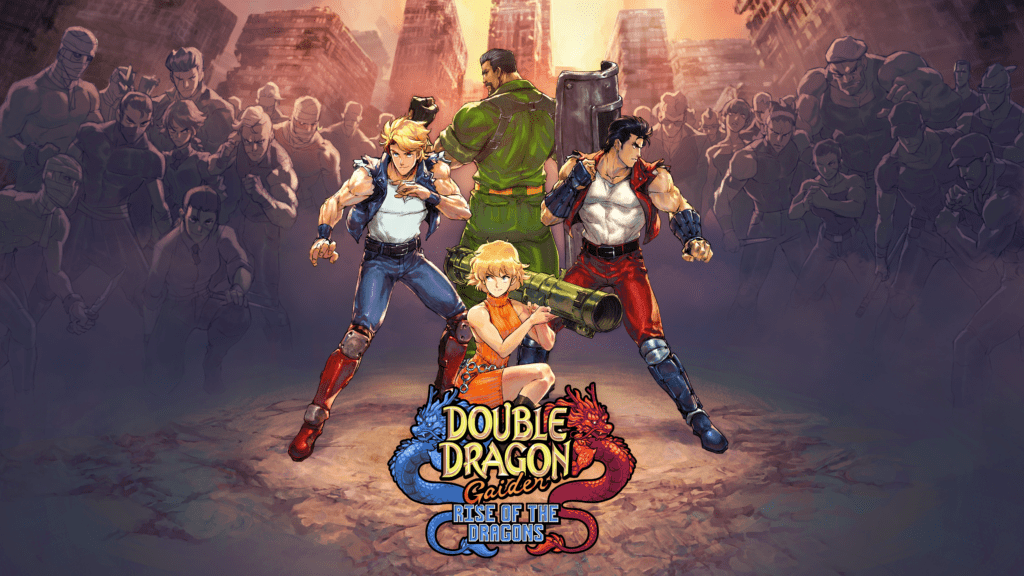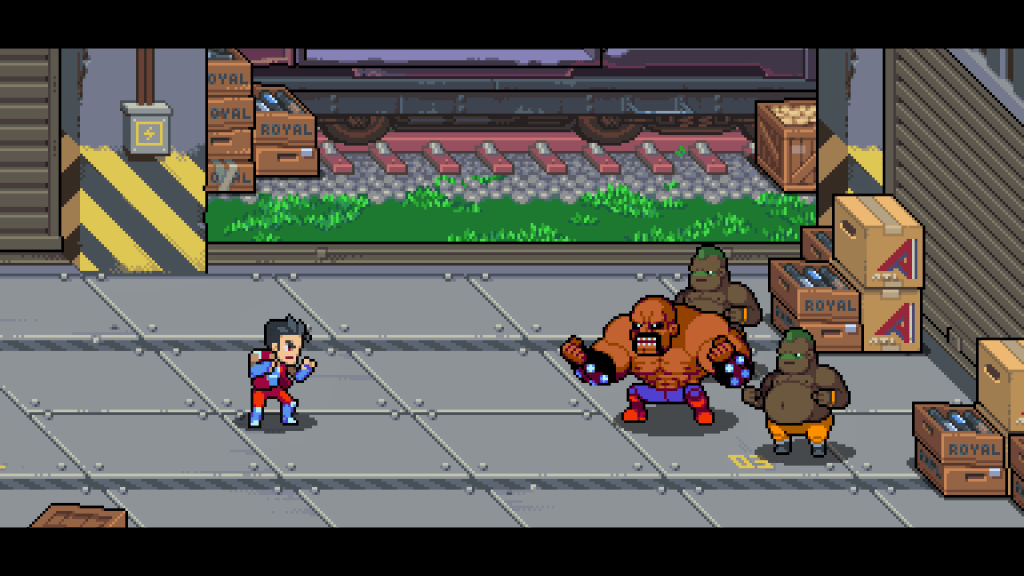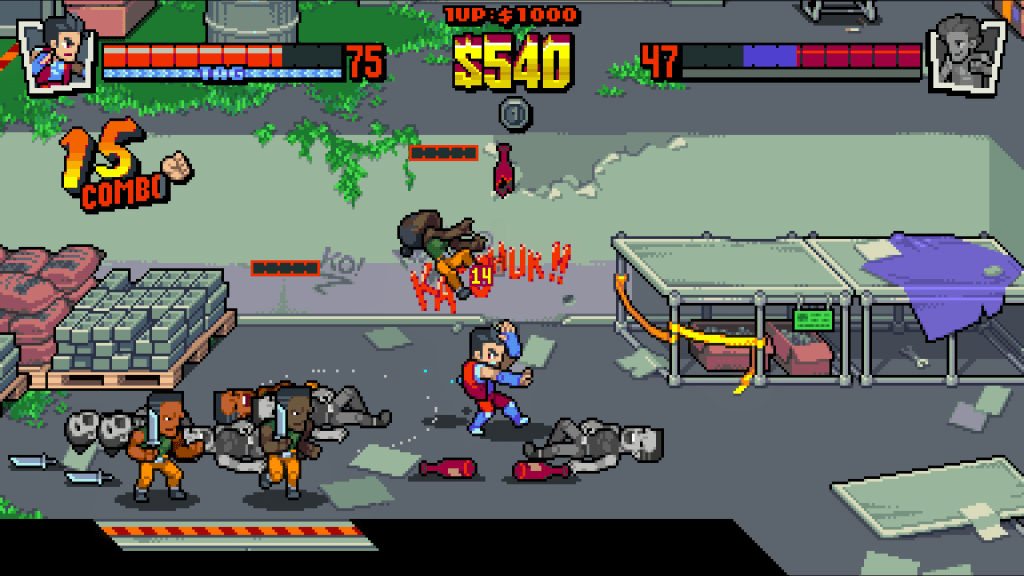Review: Double Dragon Gaiden: Rise of the Dragons

One of the more consistent dilemmas that surface in whatever long-running property you feverishly consume is the problem of staving off becoming stale. For every book series that has tens of entries from the likes of James Patterson or Janet Evanovich, for every tired comparison to the MCU and its plethora of shows and movies, there are certain long-running game franchises that have fallen into mediocrity. This fear does cause some people to try enough new things that they lose sight of what people loved about it. But in other instances, dogged dedication can also be a detriment as well.
In the case of our boys Billy and Jimmy Lee, it hasn’t exactly been a straight line as of late. They hit some of their highest highs in the arcade and NES/SNES days and have struggled to find a footing for themselves since then. The prior game in the franchise, Double Dragon IV, wasn’t exactly received with kind praise despite being rooted in the same classic vibe that made it famous. While I find it commendable to recapture the magic of the glory days of Double Dragon with IV, that cold reception seems to have been the driving force behind a follow-up that strived to keep things fresh and competent. This is weird to say about a franchise that helped popularize the beat-’em-up genre, but they’re thankfully not the only long-running franchise that fell into a rough spot over the years.
So what do you do when you want to take another stab at your glory days while also trying something new that fits in your wheelhouse? Well, in the case of Rise of the Dragons, you take the classic beat ’em up formula and smash it together with roguelike elements. Weird as that may sound to series purists, I’m willing to keep my mind open to new elements if the core gameplay is solid enough.
I think my preview from earlier this month gave me enough of a taste to look forward to finishing a run, though I’m always happy to see a long-running franchise have another chance at bouncing back into the limelight.
Developed by Secret Base and published by Modus Games, Double Dragon Gaiden: Rise of the Dragons releases on July 27th on PS4/5, Xbox One, Xbox Series X | S, Switch, and PC via Steam. The Xbox Series X | S version was played for this preview.

Stop Dragon My City Around
Beat ’em ups are generally known for being light on plot and heavy on the gameplay, but modern examples such as the River City Girls games or Streets of Rage 4 do veer into more plot-heavy focus in comparison to Rise of the Dragons. There’s definitely more of a light focus here in comparison to its contemporaries, which is in line with the early days of the genre. While I wish there was a little bit more meat on these bones, leaning back on precedent here shouldn’t surprise fans.
After a nuclear event in the year 199X, New York City has become overrun and controlled by four separate gangs. With violence and chaos consuming the city as a whole, something has to be done to quell the anarchy. Somehow, a dubiously and newly-elected mayor is able to scoop up an injured Marian from a gang scuffle and bring them to the Lee Brothers and Uncle Matin. He implores the group to take to the streets and bring each gang to justice, and it doesn’t take much for the Lee Brothers to go all in on the prospect.
While there is precedent for light story elements in the genre, what’s here is way more lean than I expected to see. Quite literally, the plot setup does not take long to take in, and the end of each stage usually ends with some flavor of “I’ve been defeated.” While I won’t spoil what happens at the end of each run, it’s clear that this was not the focus. This is essentially a side game, after all.
Seeing this sort of thing is nothing new, and neither are beat-’em-ups being more of a pick-up-and-play option in a party setting. Still, the light touch story approach still caught me off guard. What few cutscenes there are do give a little bit of room for characters to breathe, but are still bare enough for me to raise an eyebrow about the whole thing. I wasn’t expecting something along the lines of a blockbuster AAA game, but I was really hoping for maybe just a little more meat than what was here. It’s not the worst thing in the world, though I guess something had to give in terms of what to focus on with this game being a focused experience with roguelike elements. This just happened to be what suffered the most from it, so I guess it could be worse.

Friends Fighting Foes for Justice
People who remember the beat-’em-up heydey of the 90s might get intensely nostalgic for that span of time, and for good reason. Nothing was more satisfying than dropping an unspecified amount of quarters into the cabinet of your favorite game and just going to town on the mooks and bosses of the game they stood in front of for hours with friends at their side and junk food within reach. Beat-’em-ups were a natural fit for the arcades at their peak, and Double Dragon was often a mainstay in many of those same places. You had to be good to get a crowd around those same cabinets, and good gameplay played no small part in that success.
However, while the gameplay remained solid, the franchise couldn’t help the shifting trends in the gaming industry. This meant that the appeal of the beat-’em-up ended up waxing and waning over the years. Because of that, nailing a faithful experience while also drawing in new fans proved to be a challenge when attempts to revitalize the franchise had turned out to be shaky at best.
While fun and cheeky in a somewhat meta way, I wasn’t exactly hearing everyone raving about Double Dragon Neon. It’s worth a playthrough at the very least. I’m sure I heard even less about Double Dragon IV when it dropped in 2017. Both of these games clung to the core concept of the genre it helped popularize, but the game didn’t quite catch on with the general public.
This kind of backdrop means that Rise of the Dragons has to live up to some lofty expectations from all angles. The biggest of which is how well it intertwines roguelike elements with the classic gameplay that casual and longtime fans hold close to their hearts. Thankfully, those worried that these elements would somehow taint the experience can breathe a sigh of relief. While serving as a foundation for the whole game, it’s implemented in a way that doesn’t get in the way of the core gameplay. With this being considered more of a side story, hence the Gaiden moniker, there’s a little bit of wiggle room here for experimentation.
Your run will start with setting your difficulty sliders to your liking. If you’re looking for a good challenge, you can set it up as such. If you’re just looking to connect fists to face without much fuss, you weren’t forgotten there. One thing to mention here is that the difficulty you choose will dictate how much money you’ll receive throughout your playthrough. The end of each run will give you tokens based on how much money you have. Those tokens can then be used for unlockables like new characters, art, and so on. Because of this, multiple playthroughs are encouraged. But those who are able to hang on to the more difficult side of things will be rewarded handsomely because MODUS understands that many roguelikes often end with permadeath. This isn’t along the likes of titles like Rogue Legacy 2 or Dead Cells, but it pulls just enough from the roguelike genre while also remembering that it’s a beat-’em-up first.
After selecting your character (which consists of the Lee Brothers, Marian, and Uncle Matin at first), you’ll be able to jump into one of the four stages throughout the Big Apple. Depending on how much you want out of this, the order can and will affect the difficulty and what ending you’re looking to unlock. Finishing one stage beefs up the others, and finishing off the gangs will provide you with some endgame choices that I won’t spoil here. Later stages will have you going through longer sections with more difficult enemies and boss encounters, with the latter giving you the choice between buffs and other perks or just pocketing the cash and moving on.
If this feels like more of a foundation for the rest of the game than something that’s front and center at all times, you’re not too far off from that sentiment. Other roguelikes and roguelites are more aggressive with their implementation into the core gameplay, but not here. It’s more akin to adding an extra ingredient to your favorite baked good to enhance the flavor. Some might bemoan it not being a more prevalent flavor, but it has just the right amount to me. The main appeal to the roguelike elements here is the unlocks. Completing a run often doesn’t take long, and there are plenty of things to unlock with the right amount of tokens. It might be more roguelite than roguelike for some, but I don’t hate the implementation here.
They didn’t lose sight of the core gameplay here, and that might make up for the fact that the roguelike implementation was implemented to enhance that rather than take it over. Depending on your character choice, as there are different attributes (punches, throws, kicks, dodge rolls, and special moves) for each one, you may have to initially find the ideal tag team for your run. Billy and Jimmy are the well-rounded Sōsetsuken fighters you’ve come to know and love over the years, Marian finally gets in on the action being the arms expert specializing in long-range combat, and Uncle Matin is the tank. Other characters that you’ll unlock using your tokens will have their own attributes, but this isn’t a bad starting roster.
Once you finally hit the streets, it’ll be important to keep up with your combos. Especially with special KOs, which are affected by a status bar. The more special KOs you get in one go, the better recovery items you’ll get, tag team attacks or otherwise. Even if you have full health for both characters, that’ll be converted into cash. Cash is king here, and it will affect your ability to continue your run if you get KO’d yourself. You might be able to skirt by with the small revive fee at the beginning of your run, but further progression basically requires you to stay out in front of that revive fee in case you get bodied.
That focus on skill might hamper those who may not be as well-versed in beat-’em-ups as some, but those difficulty modifiers are there for that reason. Smart gameplay choices, as well as knowing when to tag your characters in and out at the right time, will definitely help move that along. It’s not a loop that will appeal to everyone, but I appreciate that both ends of the difficulty spectrum are accommodated here.
Regardless of whether or not you hit the streets by yourself or with a buddy (online co-op is apparently in the works), it’s an overall solid experience from start to finish. Having multiple endings, a plethora of unlockables, and a competent core gameplay loop doesn’t really hamper it in the way some might fear. The roguelike implementation isn’t awful, and it doesn’t detract from what makes a Double Dragon game either. Part of me wishes that the roguelike end of things was embraced a little more, but I’m fine with it being more of a new flavor to the gameplay despite that.

Pixel Powered Proficiency
There was a time when calling back to graphical detail in the vein of the Neo Geo or more 32-bit 2D games was something that made your game stand out in the sea of polygons in the modern era. With so many developers of various sizes having such nostalgia for this type of style, it’s not necessarily as novel as it used to be.
Regardless, I don’t mind this kind of art direction as long as it’s visually compelling and works within the self-imposed limitations of the era it’s drawing from. Rise of the Dragons‘ direct predecessor’s visuals might have leaned a bit too far back for some, so going for a little more 2D detail seems like the better option.
The graphical presentation here does lean somewhere in between the 16- and 32-bit styles, and does share some vibes with the likes of Scott Pilgrim and other genre titles that decide to go in this direction. While the environments hit all of the typical tropes of most beat-’em-ups with each gang’s respective area, they’re generally about as detailed as one would hope.
Some stage elements can be a little weird with depth, but it isn’t awful. The one thing that did surprise me is the choice of a chibi-esque style in the sprite work. It’s in line with the environments, but the likes of Neon and IV have drastically different character design in comparison. The game does have a tendency to fill the screen with plenty of foes without much of a hitch, but at least they move smoothly enough that gameplay isn’t negatively affected by it. Though I can see some people getting annoyed with the “well done” icon pop-up every time you get a Special KO, especially when you get several of them in succession. Aside from that, the graphical side of things is pleasing to the eye and performs as well as you’d expect from a retro-grounded title like this.
Audio-wise, it clings rather tightly to the era it pulls from. There’s no terribly compressed spoken audio, and the only kind of audible speech generally comes from the announcer quipping throughout your run. Everything else is in line with what you’d run into when you play something in this genre. None of it is terrible, not by a long shot. It just finds itself doing exactly what it needs to do and doesn’t do anything in an especially ear-bending way.
The same could really be said for the music, which also takes cues from the sound effects and speech. It tends to lean towards what the SNES sound chip was capable of, and fans of that console will surely appreciate that. While I wish I could get something more in the vein of Neon‘s soundtrack, what’s here gets the job done. Which is what I’d say about the whole presentation, really. It’s not flashy, it’s not trying to do anything revolutionary, but it works.

Different Fit, Same Fists
Sometimes, trying a new thing in your life requires a bit of experimentation. Sometimes you find what works for you, other times you have to realize that the results require a bit of an adjustment. In the case of Rise of the Dragons, it feels like MODUS found that roguelike elements can work with a beat-’em-up if you do it the right way. It might not excel at being the most compelling roguelike. But paired with solid beat-’em-up gameplay with a serviceable presentation to match is something that fans of the genre should consider taking a cursory glance at the very least.
Double Dragon Gaiden: Rise of the Dragons isn’t dragged down by the classic problem of doing too many things at once and not succeeding at any of them. Instead, we’re left with a solid experience that can stand alongside the best in the series while also being a good entry point for those who might want a less demanding roguelike in their lives. Having accessible entry points into new genres is good. Having fun multiplayer experiences are even better. Don’t ignore Rise of the Dragons, because there are some classic-laced-with-modern shenanigans here that are worth checking out.
~ Final Score: 7/10 ~
Review copy provided by Modus Games for Xbox Series X | S. Screenshots taken by reviewer. Featured image courtesy of Modus Games.

You must be logged in to post a comment.